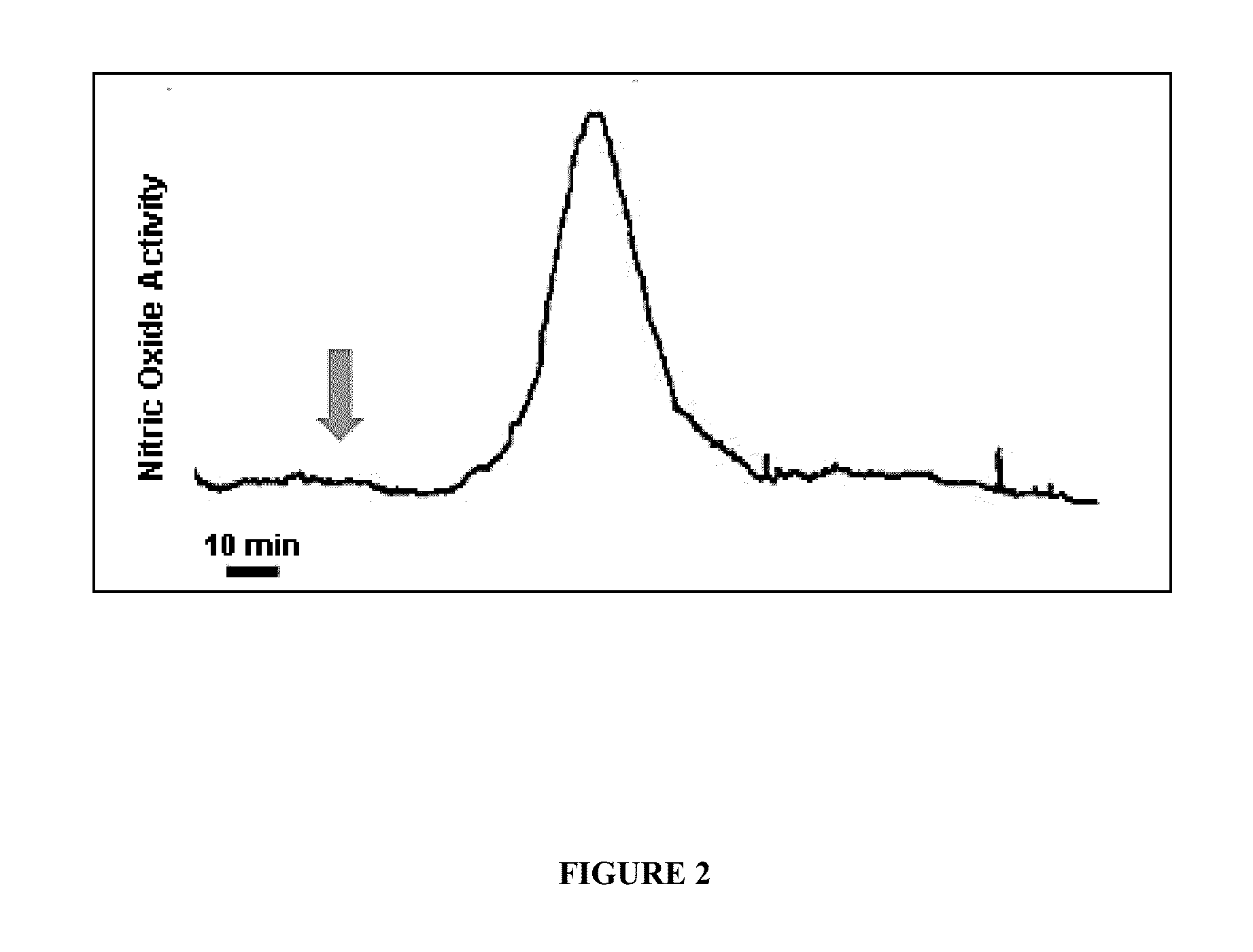Non-Invasive Diagnostic Device for Early Detection of Infection and Inflammation and Methods of Use
a diagnostic device and non-invasive technology, applied in the field of non-invasive diagnostic devices for early detection of infection and inflammation and methods of use, can solve the problems of more than 200,000 lives lost, a cost of $16.7 billion, and a sepsis that complicates certain injuries and diseases
- Summary
- Abstract
- Description
- Claims
- Application Information
AI Technical Summary
Benefits of technology
Problems solved by technology
Method used
Image
Examples
example 1
[0060]Early Detection of Host Response to Experimental Sepsis.
[0061]Intra-vascular response. This experiment demonstrated that a host response (a natural defensive reaction of the body to infection) to early experimental sepsis was detected minutes after the introduction of bacterial components or whole bacteria in rat (FIG. 1) and baboon (FIG. 2). Specifically, nitric oxide was measured in the vascular compartment following introduction of bacterial components using the electrochemical method disclosed in U.S. Pat. Nos. 5,980,705, 6,287,452 and 6,280,604, all herein incorporated by reference in their entirety. Detection of NO. was far earlier, by many hours, than conventional culture methods for detecting the onset of infection. That these responses were authentic nitric oxide signals was corroborated by the fact that they were abolished when an inhibitor of nitric oxide synthesis, NG-nitro-L-arginine methyl ester (L-NAME), was administered 30 minutes prior to the introduction of t...
example 2
[0063]Preparation and Testing of Diacetylene as a Means for Detecting Nitric Oxide.
[0064]To prepare a diacetylene monomer, 10,12-pentacosadiynoic acid (purchased from Alfa Aesar, Ward Hill, Mass., USA; product number: L09313; CAS: 66990-32-7)) (FIG. 3) was dissolved in chloroform (CHCl3; VWR International, Radnor, Pa., USA) and purified by filtration through a 0.2 micrometer syringe filter before use.
[0065]The 10,12-pentacosadiynoic acid in chloroform (0.190 g in 20 mL) was dropcast onto glass microscope slides. Evaporation of the chloroform solvent resulted in a colorless film. Chemical identity of the film was confirmed by ultraviolet-visible spectroscopy (UV-Vis) (FIG. 4).
[0066]To check the quality of the monomer films, photopolymerization was tested with UV-light as described in (16). Specifically, the monomer films were irradiated with 254 nm light for 5 min. The films turned from colorless to blue, and a characteristic spectrum was obtained (FIG. 4).
[0067]As a further test of ...
PUM
 Login to View More
Login to View More Abstract
Description
Claims
Application Information
 Login to View More
Login to View More - R&D
- Intellectual Property
- Life Sciences
- Materials
- Tech Scout
- Unparalleled Data Quality
- Higher Quality Content
- 60% Fewer Hallucinations
Browse by: Latest US Patents, China's latest patents, Technical Efficacy Thesaurus, Application Domain, Technology Topic, Popular Technical Reports.
© 2025 PatSnap. All rights reserved.Legal|Privacy policy|Modern Slavery Act Transparency Statement|Sitemap|About US| Contact US: help@patsnap.com



